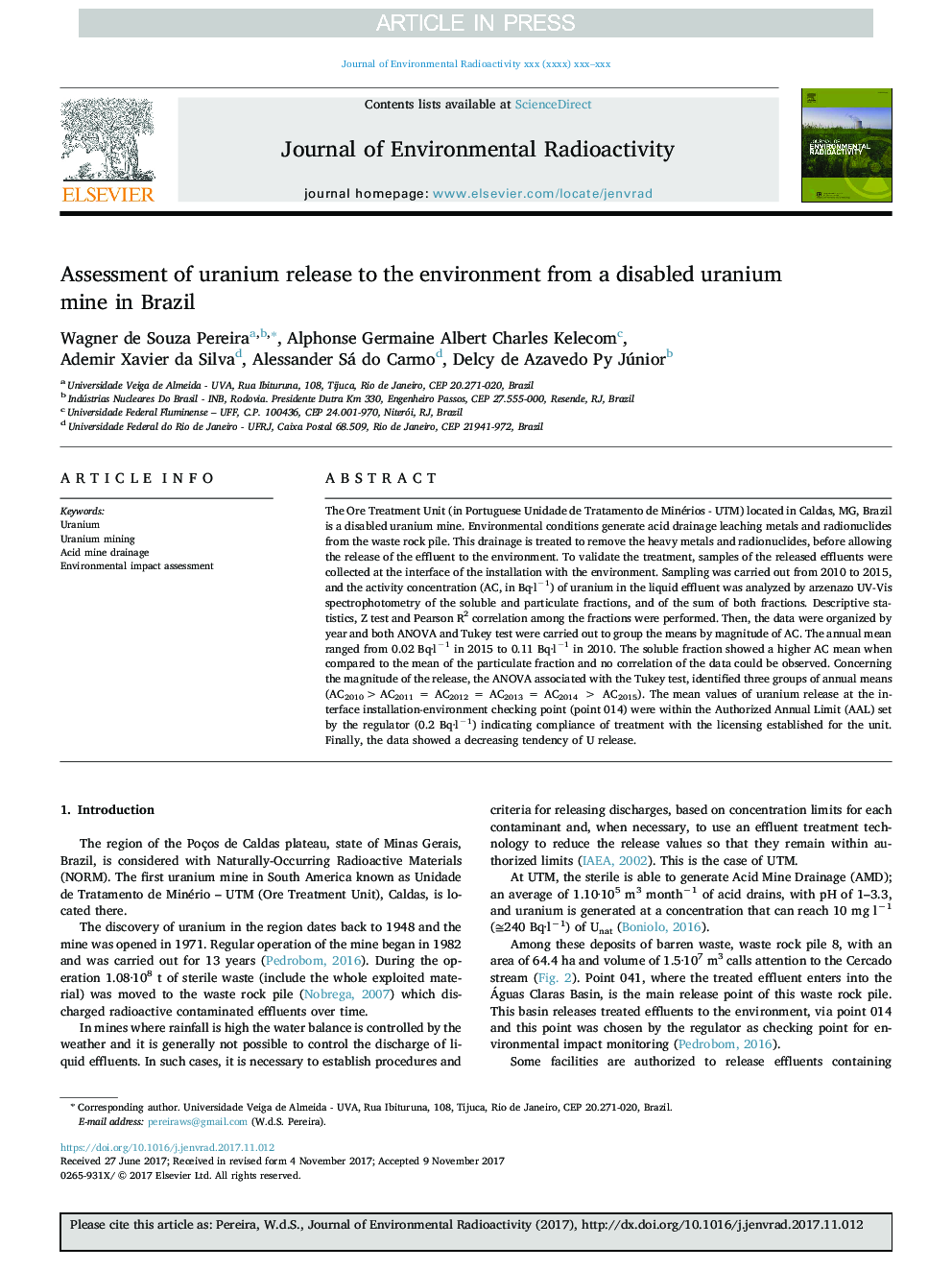| Article ID | Journal | Published Year | Pages | File Type |
|---|---|---|---|---|
| 8080534 | Journal of Environmental Radioactivity | 2018 | 5 Pages |
Abstract
The Ore Treatment Unit (in Portuguese Unidade de Tratamento de Minérios - UTM) located in Caldas, MG, Brazil is a disabled uranium mine. Environmental conditions generate acid drainage leaching metals and radionuclides from the waste rock pile. This drainage is treated to remove the heavy metals and radionuclides, before allowing the release of the effluent to the environment. To validate the treatment, samples of the released effluents were collected at the interface of the installation with the environment. Sampling was carried out from 2010 to 2015, and the activity concentration (AC, in Bq·lâ1) of uranium in the liquid effluent was analyzed by arzenazo UV-Vis spectrophotometry of the soluble and particulate fractions, and of the sum of both fractions. Descriptive statistics, Z test and Pearson R2 correlation among the fractions were performed. Then, the data were organized by year and both ANOVA and Tukey test were carried out to group the means by magnitude of AC. The annual mean ranged from 0.02 Bq·lâ1 in 2015 to 0.11 Bq·lâ1 in 2010. The soluble fraction showed a higher AC mean when compared to the mean of the particulate fraction and no correlation of the data could be observed. Concerning the magnitude of the release, the ANOVA associated with the Tukey test, identified three groups of annual means (AC2010> AC2011 = AC2012 = AC2013 = AC2014 > AC2015). The mean values of uranium release at the interface installation-environment checking point (point 014) were within the Authorized Annual Limit (AAL) set by the regulator (0.2 Bq·lâ1) indicating compliance of treatment with the licensing established for the unit. Finally, the data showed a decreasing tendency of U release.
Related Topics
Physical Sciences and Engineering
Energy
Nuclear Energy and Engineering
Authors
Wagner de Souza Pereira, Alphonse Germaine Albert Charles Kelecom, Ademir Xavier da Silva, Alessander Sá do Carmo, Delcy de Azavedo Py Júnior,
